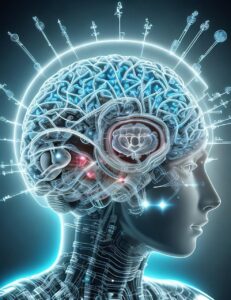
For years, Carl Jung spoke of a mysterious inner process he called individuation—a lifelong path of becoming whole by facing our shadows, integrating the unconscious, and uncovering the deeper Self. Back then, his ideas were steeped in dreams, myths, and symbols—not neurons and brain scans.
But today, neuroscience is catching up. And it turns out, Jung might’ve been onto something all along.
Neuroplasticity, the brain’s stunning ability to change and rewire itself based on experience, is now at the heart of modern research. What’s wild is how closely it mirrors Jung’s vision. Scientists have found that the brain isn’t fixed after childhood. It keeps evolving—reshaping in response to therapy, meditation, trauma, love, loss, even imagination. Sound familiar?
This means emotional healing and personal growth aren’t just abstract concepts. They’re physical. Tangible. Structural. When you face your fears, your brain changes. When you reflect, journal, or wrestle with your past, new pathways light up. When you meditate or visualize a better future, your neural map starts to redraw itself.
Of course, science speaks in synapses and neurotransmitters, while Jung spoke in symbols and soul. Neuroscience doesn’t assign purpose—it just observes adaptation. But individuation? That’s not just change—it’s transformation with meaning. And that’s where Jung still stands tall.
So yes, it seems the brain and the psyche are in conversation after all. And as we peel back the layers of both, we might just discover that the road to wholeness winds through both the heart and the head.
Hypnosis, often misunderstood as mere stage trickery, is actually a powerful tool for tapping into neuroplasticity. In a hypnotic state, the brain enters a highly focused, relaxed mode—similar to deep meditation—where old mental patterns become more flexible and suggestible. This makes it easier to break free from limiting beliefs, reframe trauma, and create new neural pathways tied to confidence, calm, or healing. In essence, hypnosis opens a doorway to rewrite the brain’s script—consciously, intentionally, and often, profoundly.

0 Comments